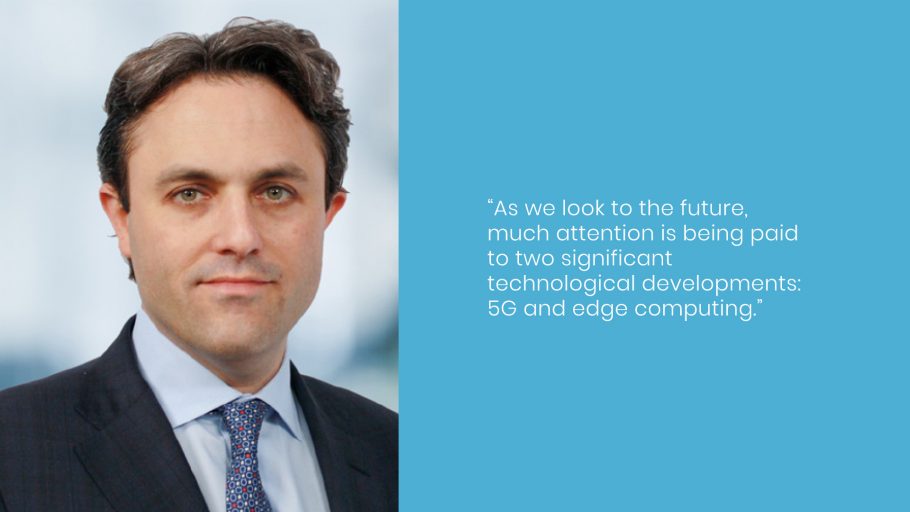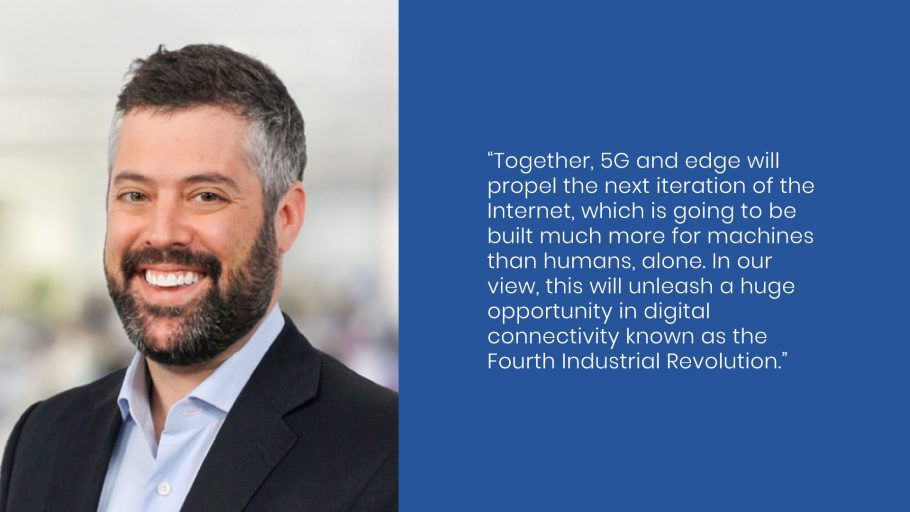Over the past decade communications infrastructure has evolved from a subsegment of telecommunications to its own dynamic and growing sector. Disruptive technologies have shaped the landscape, starting with broadband and fiber networks in the early 2000s and continuing with today’s 5G and edge computing.
Throughout these ten-plus years Cowen and Company, LLC has put itself ahead of the curve by developing a deeper understanding of communications infrastructure. Our award-winning, independent Cowen Research has identified the trends that signal a sea change in technologies—and the companies developing them. Separately, Cowen’s investment bankers have forged close relationships with both companies in the sector and the investors who want to partner with them. Across this sector, our activities exemplify how Cowen continues to play to its unique strengths as we focus firm-wide on growing, entrepreneurial middle-market companies.
Looking further at the expertise that we, at Cowen, dedicate to this sector, we launched the annual Communications Infrastructure Summit. Its held every August in Boulder, Colorado; and, this year, we are holding the conference for the seventh consecutive year.
Looking Back on the Communications Infrastructure Evolution
To gain perspective on communications infrastructure in general, let’s take a brief look back at its evolution. In 2010, fiber and bandwidth infrastructure were on our radar. We viewed these technologies heralding the emergence of infrastructure as an asset class. As a 2010 Cowen Research report stated, “Over the next few years, we expect bandwidth infrastructure to evolve into a sizable standalone segment of the telecom services industry.” This was a significant statement at the time because it determined that what had been a subsegment of companies within telecom was actually a distinct category of assets—what became known first as fiber infrastructure.
This was only the beginning. Colby Synesael, Managing Director and Senior Research Analyst at Cowen, specializing in Communications Infrastructure and Telecom Services, observed: “Within a few years, this new sector expanded beyond fiber alone to also encompass data centers and towers, becoming communications infrastructure.” A 2016 Cowen Research report observed: “We believe that Communications Infrastructure is evolving into a new standalone investment sector driven by the underlying demand for cloud services.”

Importantly, Cowen also determined at the time that the unique attributes of communications infrastructure companies—e.g., selling services under a multi-year lease agreement—made them more like real estate companies than traditional telecom companies. As a result, they needed to be valued as such.
Through this evolution, communications infrastructure began to attract a broader set of investors who previously focused on traditional infrastructure such as ports, toll roads and turbines—capital-intensive, physical assets. These investors have been attracted to communications infrastructure for the same reasons.
Building Relationships
During this evolution, Cowen has taken a unique approach to building relationships in the communications infrastructure sector. While most of the attention was focused on major gateway markets, such as New York City, Atlanta, Miami, Chicago, NoVa/D.C., Dallas/Houston or LA/San Francisco, Cowen homed in on underserved markets within the core of the country. States across the Midwest/Upper Midwest, Mississippi Delta and Southeast were home to millions of strand-miles of fiber, tens of thousands of wireless towers and thousands of data centers. This was where we focused much of our banking coverage—following dynamic and fast-growing companies located in the middle of the U.S.
Thanks to its affinity for growth-oriented, middle-market companies, Cowen became the trusted strategic advisor on M&A and capital formation initiatives for these types of companies. For example, in 2019 Cowen’s investment bankers advised Arkansas-based Ritter Communications Inc. on its majority-sale to Grain Management, LLC. Cowen understood the critical importance to the fourth- and fifth-generation descendants of the company’s founder of maintaining Ritter Communications’ century-old commitment to culture, customers and community—factors they prioritized above selling to the highest bidder.

A similar example is when Cowen bankers built what has turned into a long-standing relationship with the CEO and principal shareholder of Indianapolis-based LightBound, a leading regional provider of colocation, connectivity and cloud services. Following the receipt of inbound interest from potential purchasers, Cowen’s close working relationship with Lightbound’s senior management team allowed the company to prepare quickly and efficiently for a highly organized and streamlined transaction process. This resulted in the acquisition by DataBank, a leading provider of edge data center, connectivity and managed services.
ABOUT THE AUTHOR
Edward Rubin leads Cowen’s Communications Infrastructure investment banking effort. He is responsible for originating and leading the execution of advisory and financing transactions for data center, fiber optic, mobile infrastructure and traditional landline communications companies.



